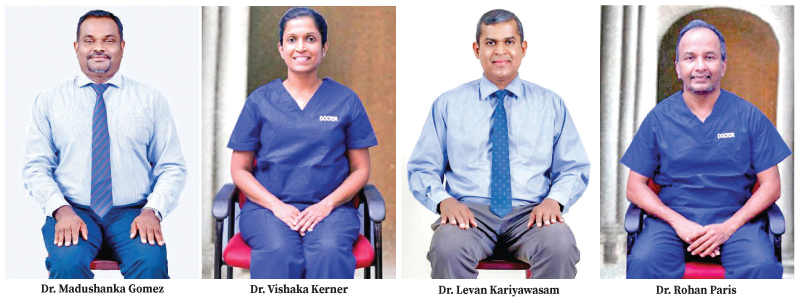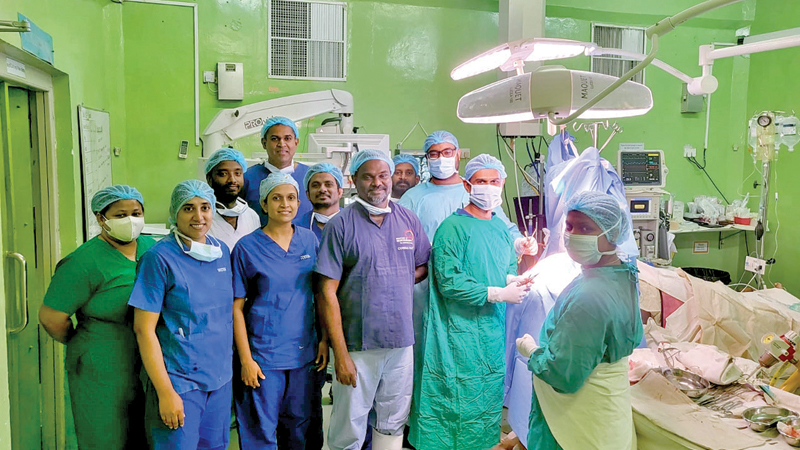Saman Jayasinghe, an artist by profession in Nochchiyagama was taking medical treatment for a brain disease from Anuradhapura Teaching Hospital under the supervision of Dr. Madushanka Gomez, the hospital’s consultant neurosurgeon. However, as a precautionary step to save the life of the patient, Dr. Gomez took a daring decision to do a “Awake craniotomy” operation which is a brain surgery done without using general anaesthesia on a patient. This surgery is used in some neurosurgeries throughout the world.
The surgery on Jayasinghe was performed by a combination of neurosurgery and anaeasthetistic team of the Anuradhapura Teaching Hospital. Dr. Madushanka Gomez was supported by Dr. Rohan Paris (Consultant Neurosurgeon), Dr. Levan Kariyawasam (Consultant Anaesthetist) and Dr. Wishaka Kerner, also a Consultant Anaesthetist along with other medical staff in performing the surgery.
The process for surgery starts a few days prior to surgery. Patient is admitted to the hospital a few days prior and additionally to the routine investigations, patient is sensitised and trained for the surgical environment. The patient is trained to identify certain numbers, shapes, colours, images and his motor functions (part of neurological examination) is checked before, throughout and after his surgery. Since he is an artist, the priority was to perform this surgery without compromising his neurological functions.
Continuous monitoring of his memory, hands and legs was needed as well. The significance of this surgery is that the recovery time is short and patient is almost cured with the conclusion of the surgery. The patient can be discharged one or two days after performing the surgery.
Dr. Gomez told the Sunday observer that there are some criteria to be fulfilled when deciding these kinds of surgeries. The patient has to be conscious, well oriented and corporative. If it’s done for a brain tumour, it has to be non-cancerous and tumour should be located in an eloquent areas of the brain with readily identifiable neurological functions and other careful and thorough considerations.
“The surgery would get rid of the unwanted parts of the lesion without damaging the eloquent areas. Hence the patient’s functional abilities preserved without disturbing or affecting them. In this case, the patient is an artist and we mainly focused on his skills and that is why we asked patient Jayasinghe to draw a sketch which reflect the functional stability is well maintained,” Dr. Gomez said.







